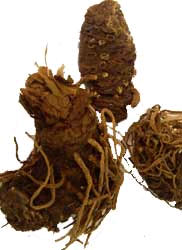[1] British Herbal Pharmacopoeia 1983 Published by the British Herbal Medicine
Association ISBN 0 903032 07 4.
[2] Herbal Materia Medica Course Notes For Diploma of Naturopathy and Diploma
of Herbalism Students by Lydia Mottram.
[3] Potter's New Cyclopaedia of Botanical Drugs and Preparations R.C. Wren
Revised by Elizabeth M. Williamson and Fred J Evans. First published in Great
Britain in 1988 and reprinted in 1989 and 1994 by the C. W. Daniel Company Limited.
1 Church Path, Saffron Walden Essex. Published 1988 Printed and bound by Biddles,
Guildford ISBN 085207 1973.
Images
1.
en.wikipedia.org
by D. Gordon E. Robertson CC BY-SA 3.0
2.
wisdomproducts.com
[1] British Herbal Pharmacopoeia 1983 Published by the British Herbal Medicine
Association ISBN 0 903032 07 4.
[2] Drogenkunde, 8th ed. Heinz, A., Hoppe. Pub. W. de Gruyter (1975) Berlin.
 Trillium
erectum, T. pendulum + other species. Beth
Root, Birth Root, Wake Robin, Red Trillium
Family: Liliaceae
Trillium
erectum, T. pendulum + other species. Beth
Root, Birth Root, Wake Robin, Red Trillium
Family: Liliaceae
